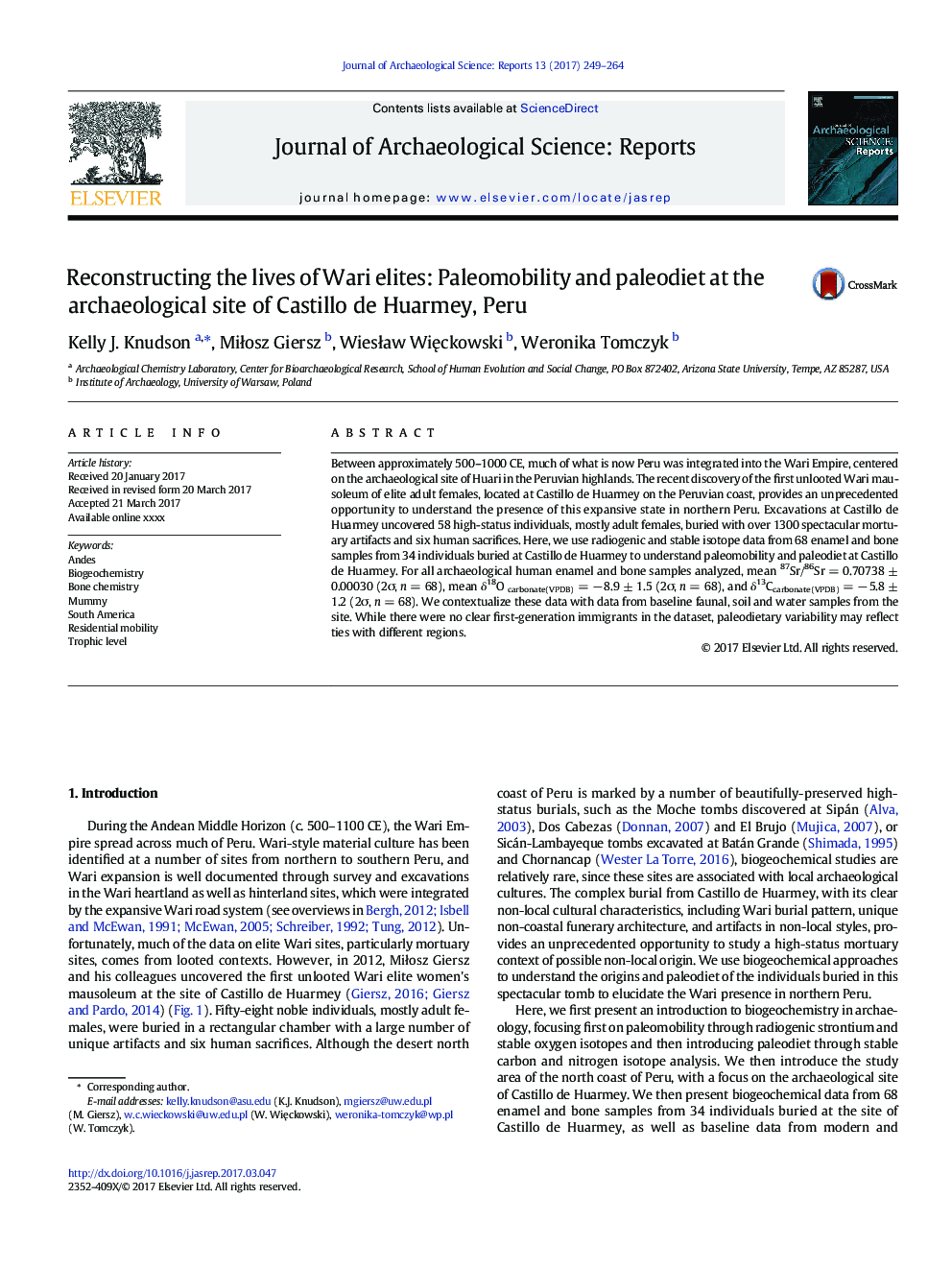| کد مقاله | کد نشریه | سال انتشار | مقاله انگلیسی | نسخه تمام متن |
|---|---|---|---|---|
| 5112414 | 1483930 | 2017 | 16 صفحه PDF | دانلود رایگان |
عنوان انگلیسی مقاله ISI
Reconstructing the lives of Wari elites: Paleomobility and paleodiet at the archaeological site of Castillo de Huarmey, Peru
دانلود مقاله + سفارش ترجمه
دانلود مقاله ISI انگلیسی
رایگان برای ایرانیان
کلمات کلیدی
موضوعات مرتبط
علوم انسانی و اجتماعی
علوم انسانی و هنر
تاریخ
پیش نمایش صفحه اول مقاله

چکیده انگلیسی
Between approximately 500-1000 CE, much of what is now Peru was integrated into the Wari Empire, centered on the archaeological site of Huari in the Peruvian highlands. The recent discovery of the first unlooted Wari mausoleum of elite adult females, located at Castillo de Huarmey on the Peruvian coast, provides an unprecedented opportunity to understand the presence of this expansive state in northern Peru. Excavations at Castillo de Huarmey uncovered 58 high-status individuals, mostly adult females, buried with over 1300 spectacular mortuary artifacts and six human sacrifices. Here, we use radiogenic and stable isotope data from 68 enamel and bone samples from 34 individuals buried at Castillo de Huarmey to understand paleomobility and paleodiet at Castillo de Huarmey. For all archaeological human enamel and bone samples analyzed, mean 87Sr/86Sr = 0.70738 ± 0.00030 (2Ï, n = 68), mean δ18O carbonate(VPDB) = â 8.9 ± 1.5 (2Ï, n = 68), and δ13Ccarbonate(VPDB) = â 5.8 ± 1.2 (2Ï, n = 68). We contextualize these data with data from baseline faunal, soil and water samples from the site. While there were no clear first-generation immigrants in the dataset, paleodietary variability may reflect ties with different regions.
ناشر
Database: Elsevier - ScienceDirect (ساینس دایرکت)
Journal: Journal of Archaeological Science: Reports - Volume 13, June 2017, Pages 249-264
Journal: Journal of Archaeological Science: Reports - Volume 13, June 2017, Pages 249-264
نویسندگان
Kelly J. Knudson, MiÅosz Giersz, WiesÅaw WiÄckowski, Weronika Tomczyk,